All about taxes

A dog is a friend of man. This expression is known to everyone from early childhood, and it is truly correct. As well as the fact that the character of the animal is often very similar to the character of the owner, even if they themselves do not notice it. This is because when choosing a pet, people pay special attention to both the first contact with the dog and the preliminary study of the breed.
Let's take a closer look at all the information about such a dog breed as dachshunds., and get acquainted with the origin and main characteristics of the species, as well as all the features of the upbringing and maintenance of this animal.
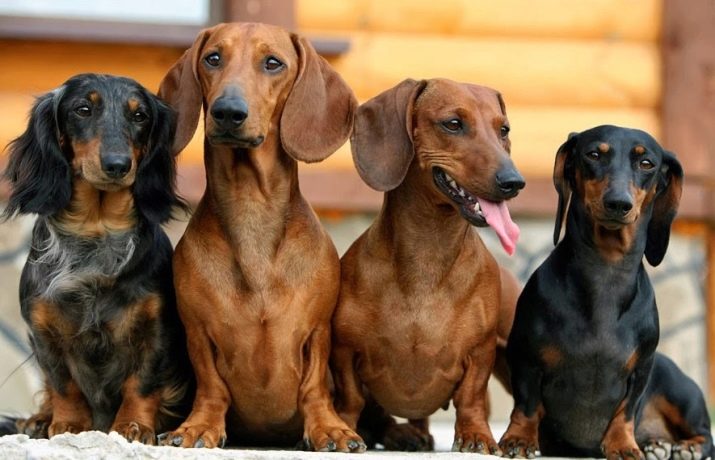
Origin story
A dachshund dog is very unusual as it is quite agile with its small size and short legs. And before getting a puppy, everyone will want to know not only his pedigree, but also the history of the origin of the breed as a whole.
The time frame for the emergence of this species has not yet been determined, since according to some data, the dachshund is considered one of the oldest hunting burrowing dog breeds.
The first dachshunds existed in the days of Ancient Egypt, since on various cave paintings were found images with animals that look very much like dachshunds.

The modern breed - as it is to this day, began to form back in the distant 16th century, in the south of Germany. In those days, dogs of this breed were called very original - "badger warrior" or "crawling after a badger." This was due to the fact that the animal, during the hunt, deftly penetrated holes and pursued its prey, bringing it to its owner.
It is believed that the dachshund's distant ancestors are short hounds of dog breeds, from which it inherited its best qualities: quick-wittedness, resilience, endurance, the ability to catch commands and clearly follow them, courage and passion.
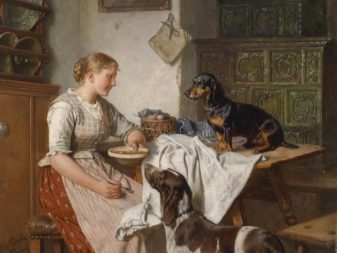

By the end of the 18th century, the breed had become so popular and famous that dogs began to be bred not only in Germany, but also in other countries. Hunters all over the world wanted to get a four-legged pet, which would be not only a faithful friend, but also a reliable associate in the hunting business.
Some time later, the animal began to be bred for decorative purposes - as pets. It was thanks to this widespread distribution that in 1870 the breed standard was established and adopted, which later, in 2001, was confirmed by the International Kennel Federation. It was believed that in comparison with other dogs, the dachshund breed is not so popular, but despite this, in 1900, a society of dachshund lovers was even founded. This society had Russian roots and specialized in organizing exhibitions and keeping pedigree books of this breed.
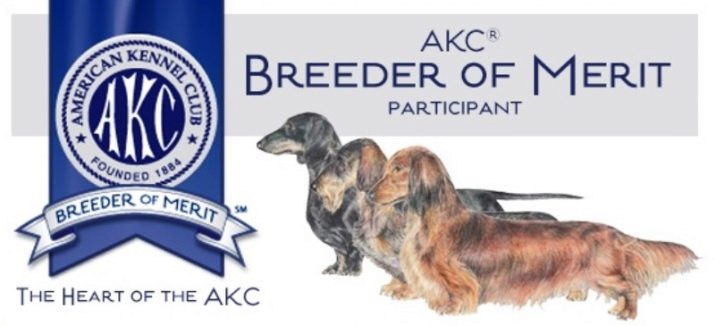
As for the name of the breed, it is of German origin and originally sounded like Dachshund, which translates as "badger dog". But such a long designation of the breed was practically not used, over time it was shortened to the designation Dackel and a little later turned into Teckel, from where the current name - Dachshund - came from.
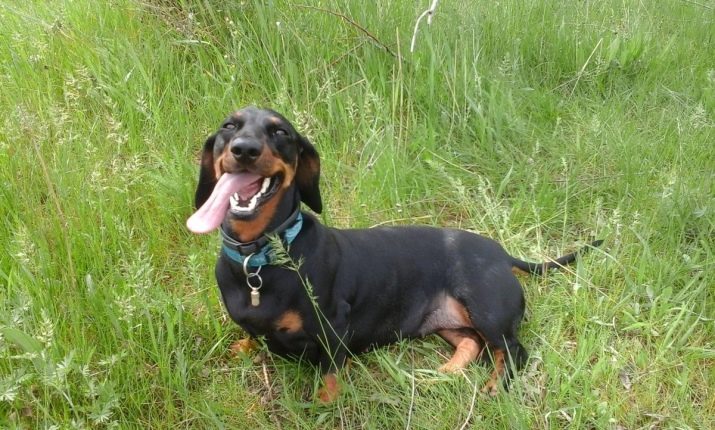
Description of the breed
Undoubtedly, the breed has a very interesting origin story, but this is not enough to form a complete impression of this animal. In order to fully understand all the features of a pet, it is necessary to study how it looks, and the characteristics of the breed, and even standard colors and sizes, as well as deviations from the standards.
Outwardly, the dog looks somewhat unusual: has a long, oblong body, short legs and a thick tail at the base, but thin at the end. In addition, dachshunds are famous for their strong skeleton and physique, and thanks to such a powerful skeleton, the dog stands firmly on its feet and moves quickly, despite the small size of its paws.
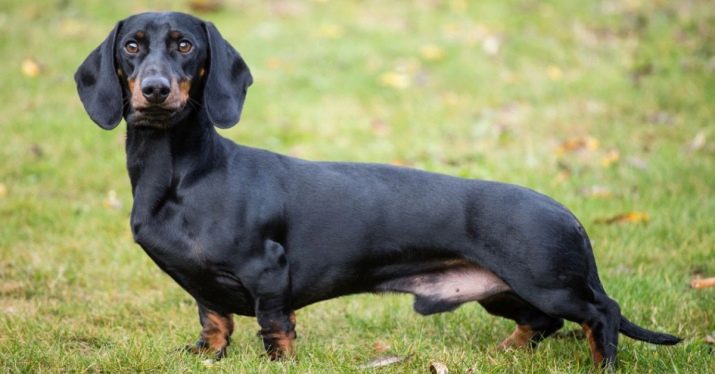
Dachshund has a well-developed nose, a massive muzzle and jaws that can open wide. The lips fit tightly, closing the jaw, which is perfectly developed, filled with strong, rather large teeth and steadily closes. The eyes of the dachshund are small and oval in shape, as well as brown, black-brown and reddish in color. Ears set high on the front edges of the cheekbones.

The dachshund has a fairly high and sturdy neck, a slight bulge at the nape, and a tight-fitting skin around the throat. The standard breed is large and is considered a medium sized breed rather than a small breed. The average weight of an adult dachshund is 9 kilograms, while miniature animals weigh 2 to 5.5 kilograms in minutes.
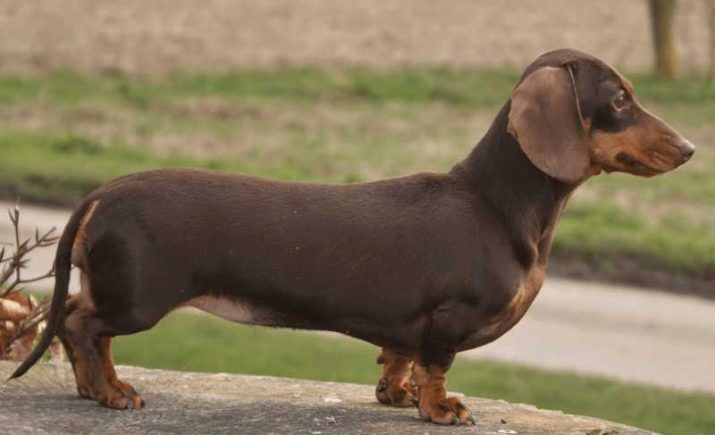
The growth of the average dachshund reaches 28 centimeters, and the volume of the chest is 36. The parameters of a small animal of this breed are much smaller, by about 5-10 centimeters.
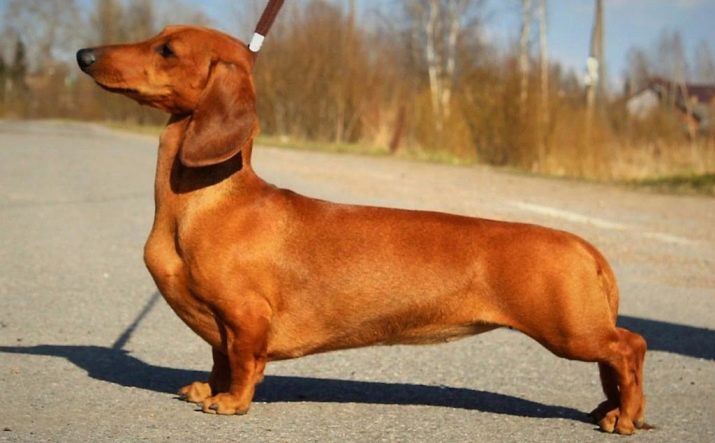
Character
The character of the animal also plays an important role, especially since the animals of each breed have their own characteristics. For example, dachshunds are characterized by friendliness, and in a calm, comfortable environment, they will not show aggression.
But, along with this, the animal has a very passionate character, which is manifested in the hunt.
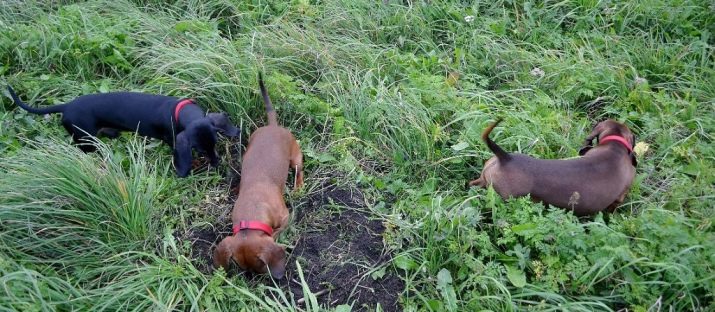
The dog's good instinct allows it to easily detect the presence of an animal at a fairly large distance, and it either starts pursuing it, or gives a signal to its owner. A dachshund can independently cope with badgers, raccoons, and sometimes even foxes. Can bring a shot duck, as well as inform the owner that there is a wild boar or even a large brown bear nearby. In addition to all the positive qualities that have already been described, dachshunds are very loyal, so they will follow the owner and protect him to the last.
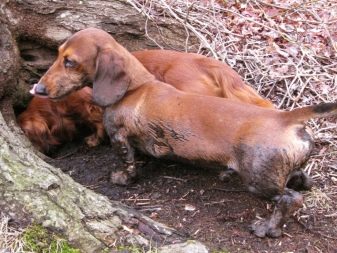
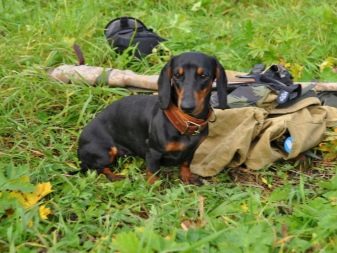
There are also negative aspects to the character of the dachshund regarding its courage. The fact is that often the dachshund's courage is excessive, and at the peak of the manifestation of his emotions, the pet may not calculate its strength and start a fight with another animal, which will be many times larger and stronger than the dachshund.
In such a situation, the dog can even be fatally injured.
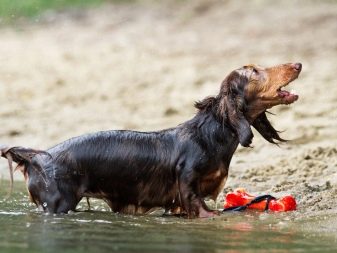
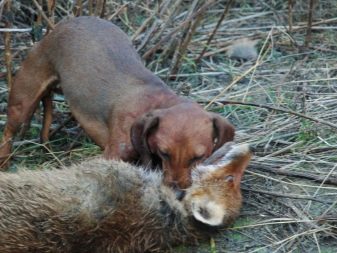
That is why the owners of dogs of this breed need to pay special attention to education, directing all emotions to a peaceful channel and helping the animal to throw them out as part of the training process. Disrespectful attitude of the owner, shouting and beatings can leave a serious imprint on the character of the dachshund. These animals are famous for high pride and pride, so any rude treatment in their direction can cause a painful reaction, and even a blues. When dealing with a dachshund, you should clearly distinguish between rudeness and educational rigor.
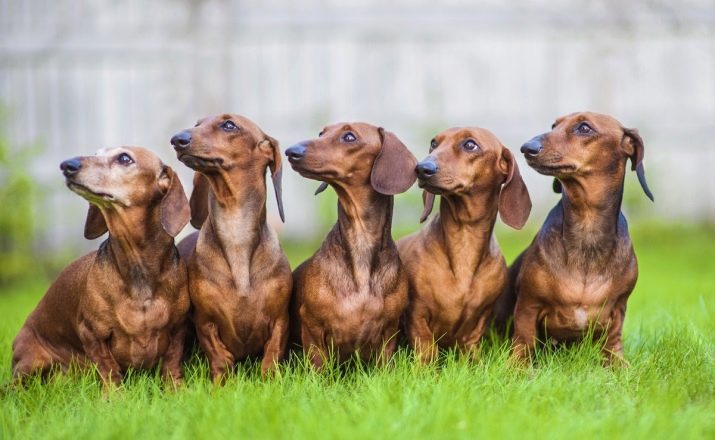
Dogs of this breed, if properly educated, will make excellent companions and family members. They will not only share their love among all adults, but they will also be the best friends and protectors for children.
In addition, dachshunds are well tolerated by any type of transport, so you can safely take them with you on trips.
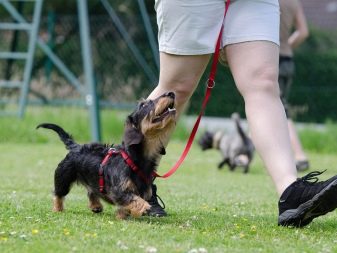

With the right approach and accustoming dachshunds to peaceful communication with other animals, they will be able to get along not only with dogs, but even with cats. Therefore, the owners need to decide on the methods of education and choose the appropriate system.
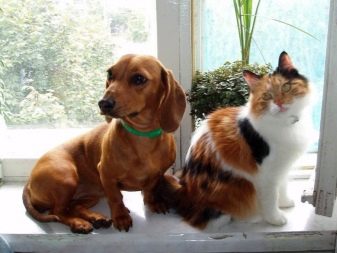
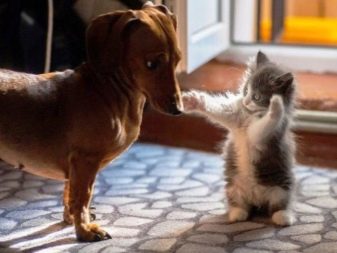
It is worth mentioning another feature of this animal - a clear and rather loud voice. This feature can irritate neighbors, since dachshunds are very fond of not just barking for no reason, but sometimes even wailing. Therefore, you need to make sure that the dog has toys and good leisure time, which will not allow him to get bored and make noise out of the blue.
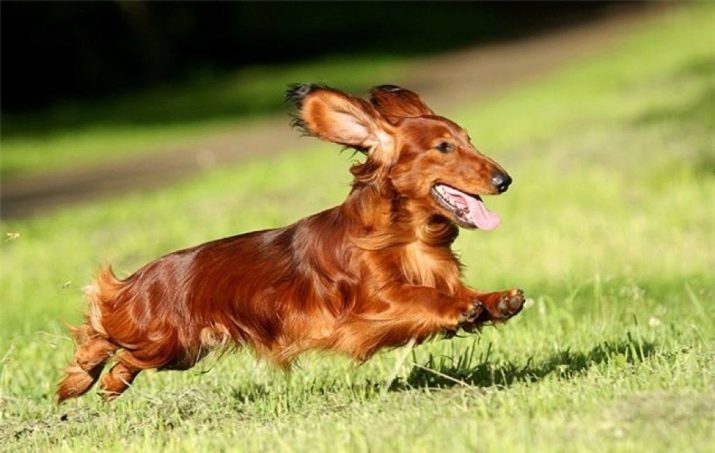
Advantages and disadvantages
Undoubtedly, any breed of dog has its pros and cons, but you should not make up your opinion about the breed as a whole using such criteria, since, in addition to general characteristics, each animal has a number of individual characteristics.
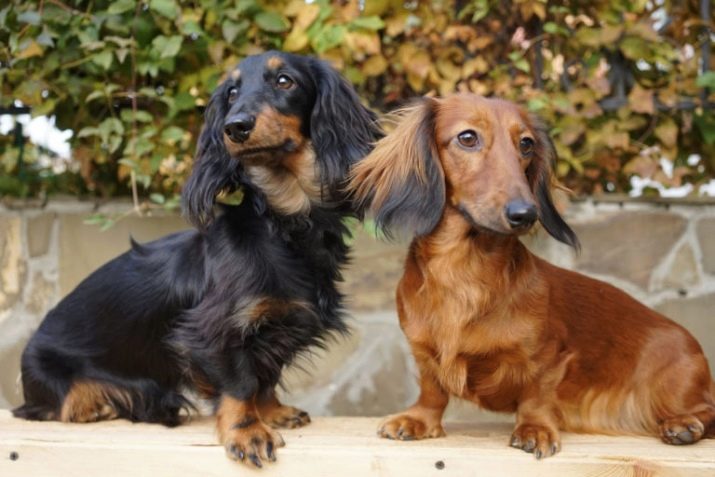
In this case, we will consider the general positive and negative aspects of the representatives of this breed.
Among the pluses, the following points are noted.
- The dog understands the owner perfectly. Due to the high level of intellectual abilities, the animal learns perfectly, understands commands and picks up the intonation of the voice.
- Dachshunds have a high degree of endurance. They are very energetic, able to walk, run, jump for a long time, and are happy to be involved in outdoor games. It is recommended to walk with them twice a day, which will benefit the owner himself.
- Although it seems to some that outwardly the dachshund is rather awkward and funny, it still belongs to the finest representatives of hunting breeds. In addition to catching burrowing animals, the dachshund is also able to hunt in the water, since dogs of this breed are very good swimmers.
- A dog of this breed is very sociable and funny, thanks to which it quickly captivates others and wins the love of its owners.
- In addition to being a good hunter and loyal companion, the dachshund also acts as an excellent guard.On the Internet, you can find many stories telling how a small dog saved its owner from angry predators.
- Such dogs are famous for their charisma and artistry. For a delicacy, the dachshund will arrange a whole show for you.
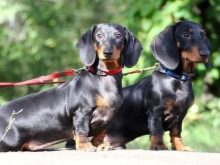

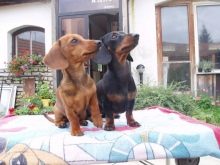
Along with the pluses, there are also several minuses.
- Due to the long spine, the dog can have considerable health problems, and in order to avoid them, you will have to regularly load the animal and tire him with physical exercises.
- Dog ears must be carefully looked after, because due to their unusual structure, they are prone to frequent occurrence of various kinds of diseases.
- Dachshunds tend to be overweight and even obese. That is why it is necessary to monitor the nutrition of the dog and carefully compose its diet.
- Hunting instincts will not go unnoticed even in a city apartment. Dachshunds are very fond of digging the ground, and at home they can switch to flooring or furniture.
- On the street during a walk, dachshunds can bark at other dogs, thereby provoking conflicts.
- With the wrong upbringing, an animal can become not only aggressive, but even dangerous.
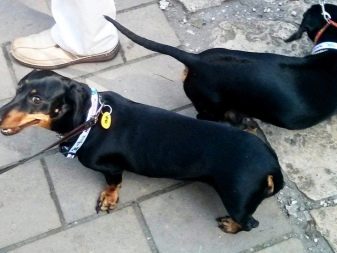

Life span
The life span of a dachshund is 14-16 years. And although by human standards this is quite a bit, nevertheless, dogs of this breed are classified as centenarians. Often the lifespan of an animal depends on health, nutrition, exercise, and other factors. Let's take a closer look at the most popular factors that negatively affect the life expectancy of a dachshund.
- Excessive feeding of unsuitable food, fatty or spicy foods, and other prohibited foods. This not only causes obesity in the animal, but also seriously disrupts the digestive tract.
- Jumping from great heights can damage the limbs of the dachshund, which will subsequently affect its life expectancy.
- If going up stairs is good for the joints, then you need to lower the animal down on your hands, because when you go down the dachshund on your own, it just runs the risk of getting problems with the joints.
- Frequent and untreated ear inflammation can shorten life expectancy.
- You can prevent or get ahead of disease with the help of prophylaxis. To do this, you need to study the weaknesses of your pet's body and act accordingly. It will also be useful to choose the right vitamin complex.
- It was mentioned earlier that a dog can mess things up. It is worth saying that in the process of playing with your things, the dachshund can tear them apart and absorb inedible particles. This, in turn, affects the health of the pet and negatively affects the life span.
- The sex of the dog also affects life expectancy. During hormonal surges, males may experience problems with the genital system, and in the absence of the necessary treatment, the situation can become very deplorable, even fatal.
- However, if you decide on neutering or neutering, you will need to be puzzled by the issue of changing the diet, since improper nutrition after these operations can negatively affect the life of your pet.
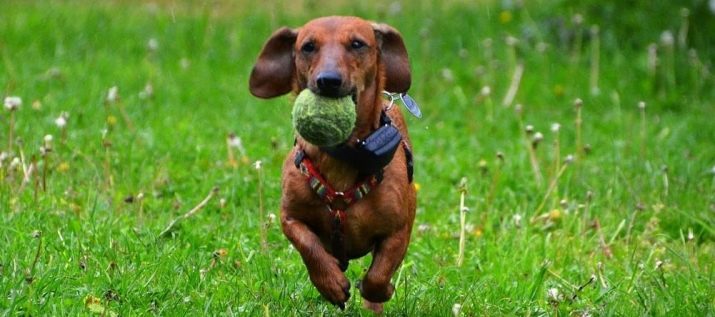
Views
Many are accustomed to the standard sleek-haired dachshund and other varieties of the breed are surprising to people. But it is worth knowing that animals of this breed differ in size, color and texture of the coat.

The size
By size, dachshunds are divided into large, dwarf and royal, which are also called rabbit. The standard height of a large dachshund can reach 30 cm at the withers, the minimum chest girth is 35 cm, and the weight reaches 9-10 kilograms.
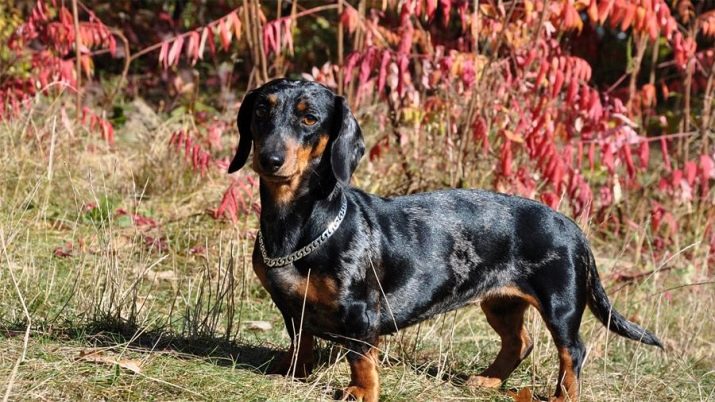
The dwarf dachshund is more modest in size. The girth of her chest varies between 30-35 cm, while the height of the withers is only 15-20 cm. The weight of a healthy animal can be in the range of 4-5.5 kilograms.
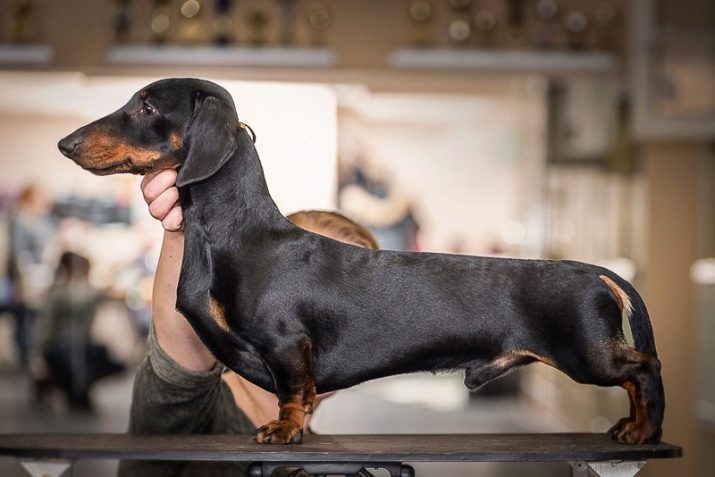
The rabbit or king dachshund is the smallest of all types.The weight of this dog will be no more than 4 kilograms. The height of the animal is 15 cm, and the volume of the chest should be no more than 30 cm.
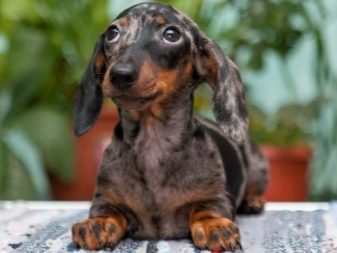
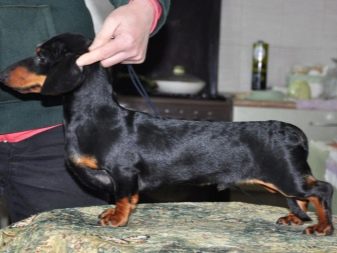
Color
The most common species are red and brown dachshunds. Usually they have one shade in color, but sometimes two-colored animals come across, for example, with a white chest, specks on the face and paws. The chocolate dachshund looks very nice. The shade of her coat is reminiscent of delicate milk chocolate in color. This tone of the fur coat gives the animal a more noble look, and with proper care, the coat shines, attracting enthusiastic glances.
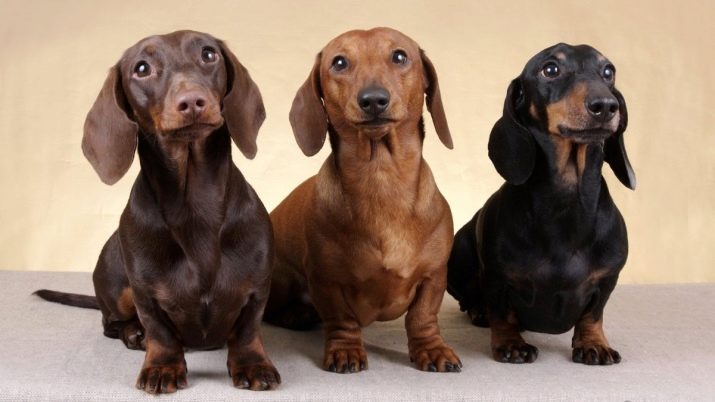
The so-called tiger dachshund does not at all resemble a tiger in its colors. The name of this color is similar to a dangerous predator only in that the spots on the animal's body are placed in stripes, but at the same time they are not pronounced, but rather scattered. The colors in this color are most often light brown and dark chocolate.
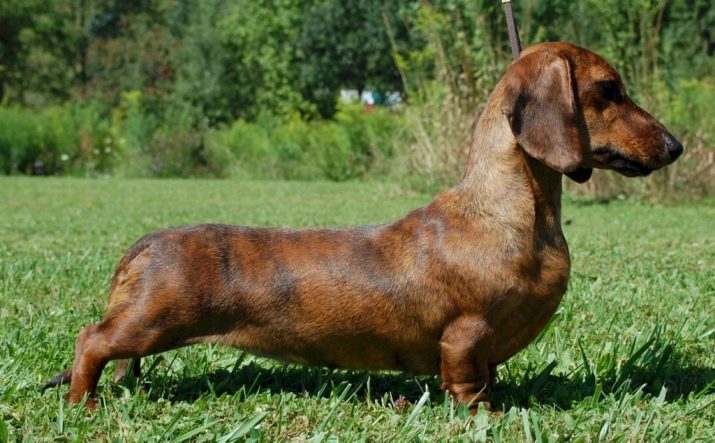
The spotted dachshund is also called the marbled dachshund. And all because of the peculiarities of its color, which resembles the color scheme and texture of the stone. This dog looks very beautiful and unusual. Most often in the marbled color there is a combination of black, gray-white and brown colors.
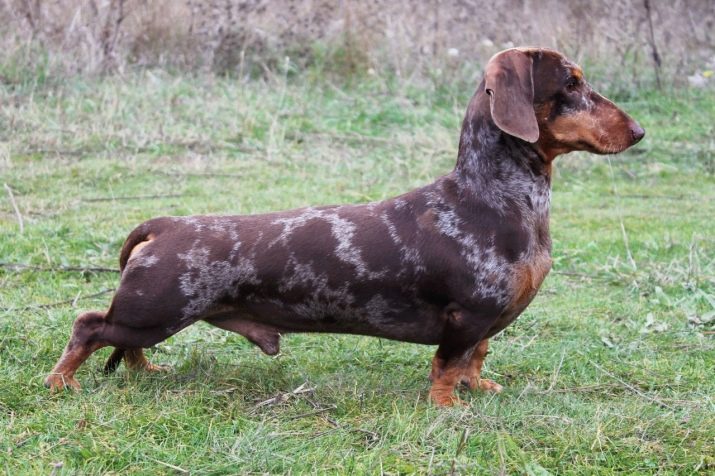
The most rare is the cream-colored dachshund. This breed looks very beautiful, and the delicate shade of the animal's coat attracts attention and gives the dog a more interesting and original appearance.
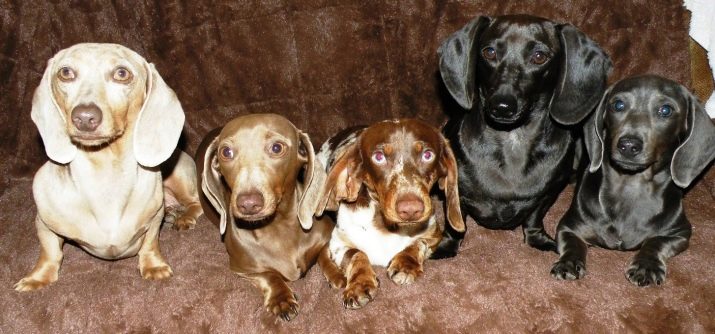
Wool
As for the coat, then this breed is subdivided into several varieties.
- Smooth-haired dachshund - the most common and the most unpretentious to care for. The smooth short hair of the animal is well cleaned, does not get tangled and does not require combing. The only important nuance of this type is sensitive skin, which requires careful care. In addition, the smooth-haired dachshund is hypoallergenic and practically does not shed.

- Wire-haired dachshunds look very interesting and unusual. The animal's hair can be up to 2 centimeters long, while it will be tough, and even prickly in places. Taking care of such a coat is a little more difficult, it needs to be brushed regularly and washed as needed. But such a coat also has an advantage - it protects the animal's body from damage and bites from small animals.
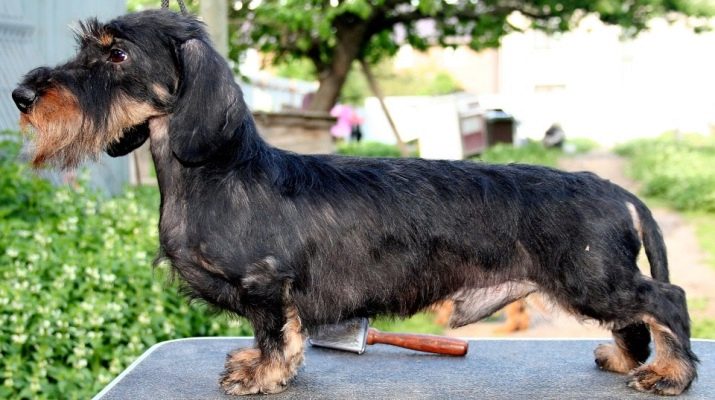
- Long-haired dachshund - the very grace and grace. Long, soft, flowing hair spreads over the body, forming a neat, even and shiny coat. Care for long hair is more difficult, since it must be carefully combed and unraveled, daily cleaned of dust and dirt, and make sure that no plant particles remain in the wool. If necessary, such a cover can be trimmed and cut.
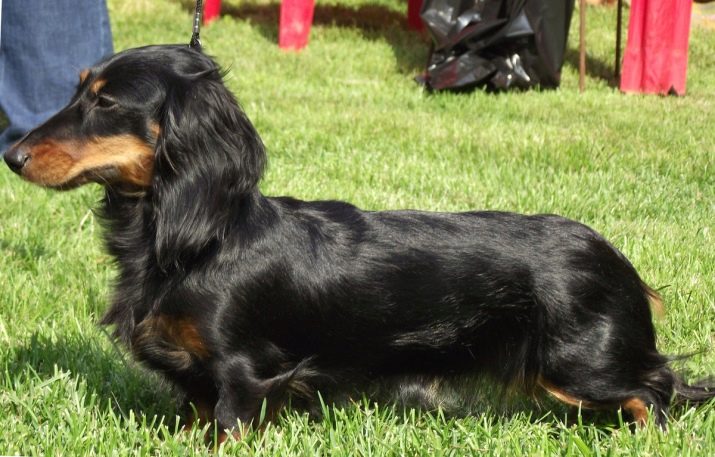
Conditions of detention
Each animal needs proper care and organization of the necessary conditions for keeping. Dachshund is no exception, on the contrary, when maintaining it, it is necessary to take into account many important nuances.
For example, in the period from 1 to 2 months of a puppy's life, it is necessary to carry out the first treatment in his life against parasites, as well as be puzzled by vaccinations. This must be done before you take the dog outside, since it is important to protect it from all possible infections and diseases.
If the animal will live in an apartment, it is necessary to start toilet training from an early age. Until you go outside, you can designate a toilet special tray or a simple disposable absorbent diaper. It is necessary to show the baby a place where he can relieve himself, and gradually he himself will get used to it. Similarly, it will be necessary to act after going outside.
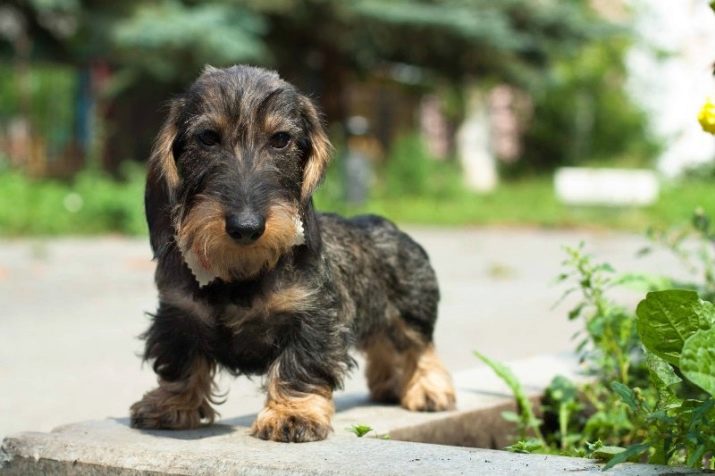
In order for the pet to be comfortable, it is necessary to protect it from severe stress. Of course, it is impossible to foresee all the factors on the street, but it is the responsibility of every owner to ensure a calm atmosphere at home. Otherwise, the dog can become nervous and aggressive.
You will need to regularly perform hygiene procedures: trim your nails, look after your ears, and wash your paws. Let's take a closer look at how to do it correctly.
- For ear care, you can use a slightly damp cotton ball and cotton swabs. There are also special wipes for caring for animals. The ear space should be wiped and cleaned from dirt gently and without pressure, so as not to injure the animal.
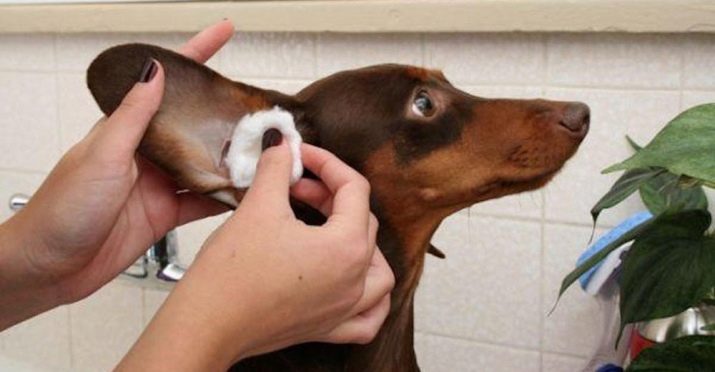
- To trim the claws of a dog, you need to acquire special nippers; it is strictly forbidden to use ordinary household scissors. You can not cut your nails too deep, as there is a risk of vascular damage. Only the overgrown ends should be cut off, after which they will need to be carefully filed and smoothed out all the irregularities.
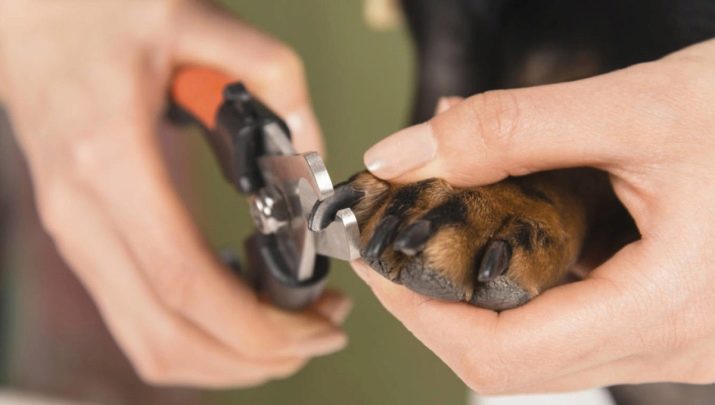
- It is often impossible to wash the animal, because even the most expensive means of the dachshund can start allergies. But even with rare washing, you need to organize everything correctly. It is necessary to adjust the temperature of the water (it should be moderately warm), lay a towel or a special mat on the bottom of the bathtub so that the dog does not slip or fall, and during the washing process, make sure that water does not get into the ears.

- Although you don't need to wash your dog completely often, you should clean your paws after every walk. This can be done with a wash or special napkins.
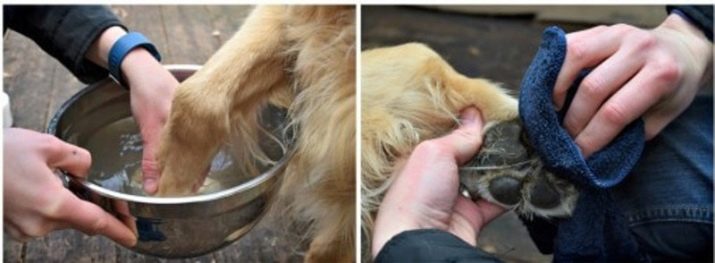
- The long-haired species of this breed need to be brushed regularly, as the formation of mats can cause great discomfort to the dog.
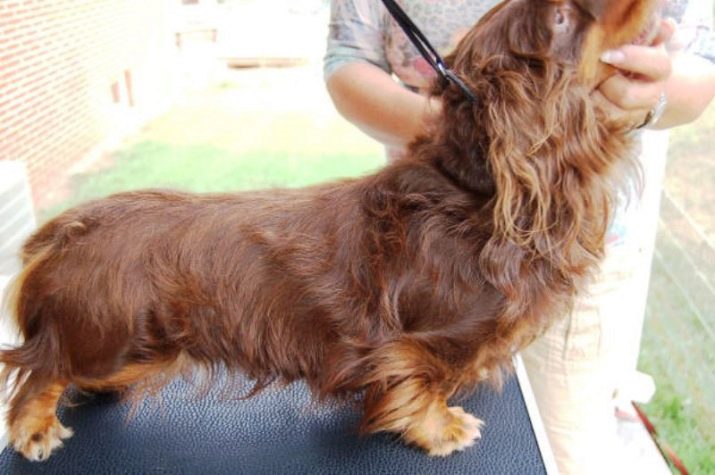
- It is necessary to monitor the condition of the teeth and periodically contact a veterinary clinic to clean the oral cavity.
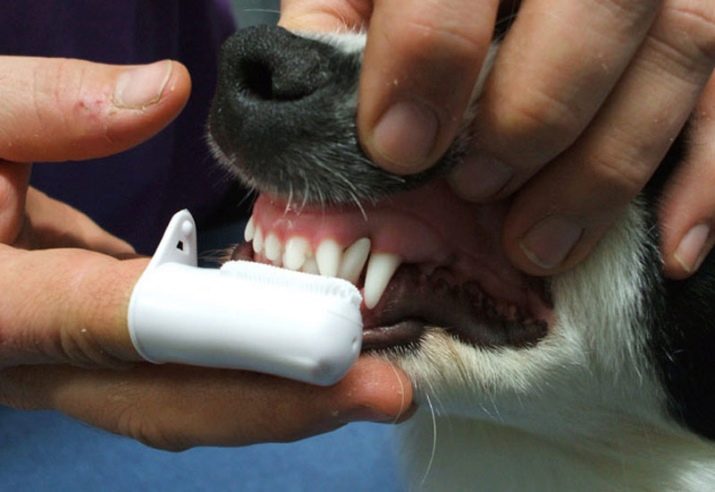
If your dog loves to pick up food or other items on the street, it is important to make sure that he does not have this opportunity. To do this, you should use a collar with a leash or a muzzle. A muzzle can also be useful when going to the veterinarian, so that the animal does not injure others from fear and stress.
During walks, you need to take care that the animal does not get wet in cold weather and does not freeze. For this, it is recommended to get a jumpsuit. It is best if there are two of them: a light version made of waterproof fabric - for rainy weather, a warmed jumpsuit with fleece or faux fur - for a cold winter.
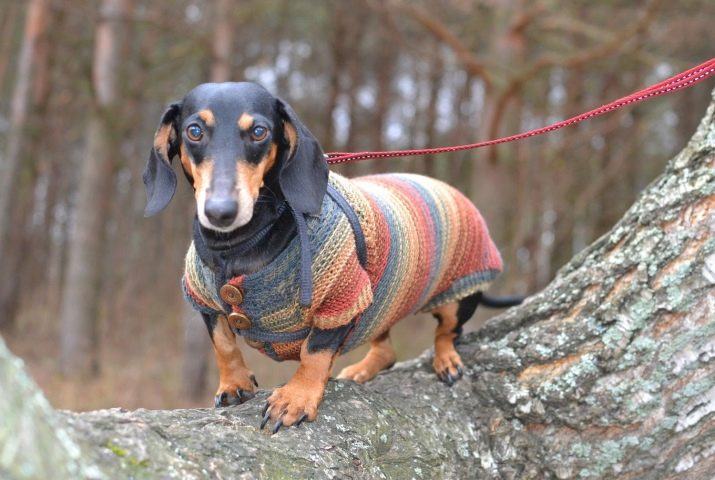
In order for the animal to feel comfortable in your home, you need to arrange a personal sleeping place for it. It can be a cozy house or just a bedding. It is necessary to place the sleeping place of the animal so that the dog can observe the rest of the space, but at the same time it is not in a draft.
As for the health of the animal, you need to be extremely careful here, since even improper training can injure the dachshund - with excessive and incorrect loads, the animal can damage the intervertebral discs, which in the future will lead to paralysis.
But, at the same time, it must be provided with walks (at least 2 times a day), jogging, and correctly selected exercise complexes.
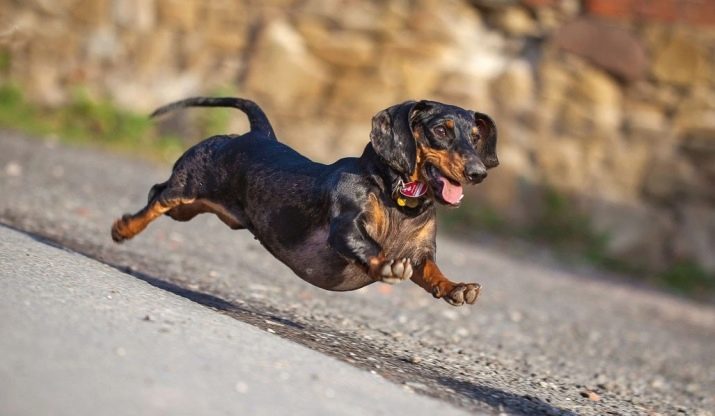
And, of course, the dog will always need the love and affection of the owner. So remember to stroke, hug, and scratch behind your pet's ear.
What to feed?
It is no secret that proper nutrition is a guarantee of health not only for humans, but also for dogs. Especially the dogs. The digestive system of these animals is arranged in such a way that many harmful delicacies allowed to humans will be deadly for the body of a dachshund.


Natural food
If you want to accustom your animal to a natural diet, you better research this topic carefully, as it contains many important nuances. First of all, let's define the list of permitted products:
- lean meats: chicken breast, veal, turkey breast, horse meat and some parts of lamb;
- offal;
- some types of fish;
- buckwheat, rolled oats and rice;
- among vegetables, the most preferred are carrots, cabbage, tomatoes, apples and zucchini;
- eggs, cottage cheese, fermented baked milk, yogurt and low-fat cheese.

The greatest attention should be paid to the nutrition of the dog in the first few months of its life, and especially during the period of weaning of the puppy from the mother. It is then that the animal is completely transferred to an independent diet, which should not only be tasty, but also balanced, nutritious and healthy.
Puppies eat often, but in small portions, and it is best to have a different meal for each meal. Let's take an example of a one-day menu for a dachshund puppy aged 3 to 7 months.
It should be noted that the menu is approximate, so the number of meals and products should be selected individually, based on your dog's preferences.
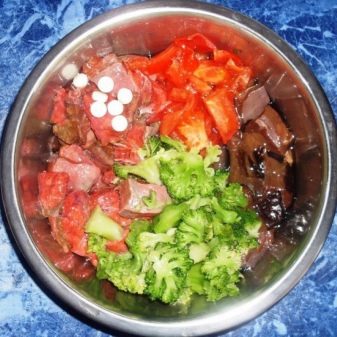
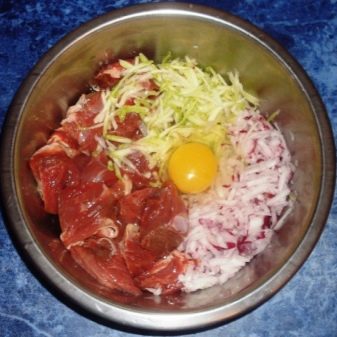
Menu:
- 8:00 - cottage cheese with the addition of a small amount of vegetable oil;
- 12:00 - yogurt or fermented baked milk;
- 15:00 - buckwheat porridge, cooked in broth with meat and carrots, you can also add a little vegetable oil to the porridge;
- 19:00 - sea fish with rice and boiled pumpkin, you can supplement your meal with a small piece of apple;
- 22:00 - boiled rolled oats with kefir, herbs and a drop of vegetable oil.
You can diversify your diet by adding other foods to it. For example, a boiled chicken egg will be a great snack after breakfast, and fish can be safely replaced with turkey meat.
With age, the dog starts to eat less, but the portion for one meal increases significantly. Adult dachshunds are fed twice a day, while providing the dog with constant access to a bowl of clean water.

As for the diet itself, it is usually porridge with meat and vegetables. Daytime snacks in the form of eggs or fermented milk products are allowed: cottage cheese, fermented baked milk and yogurt. In addition, special minerals and nutrients must be added to the food of both a puppy and an adult to ensure the normal functioning of the body.
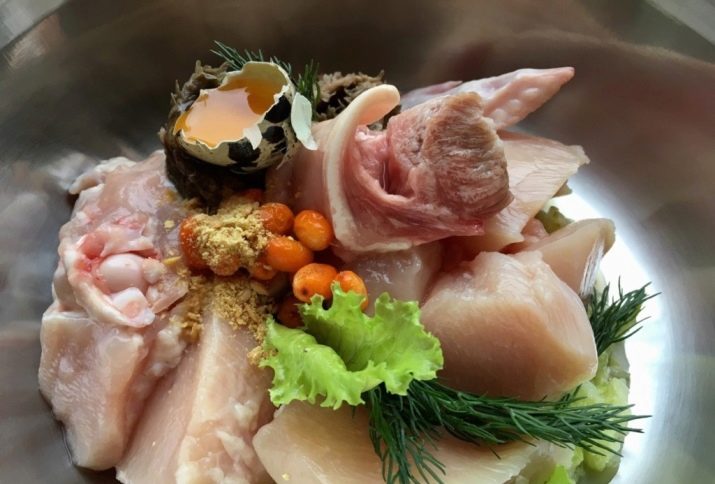
In addition to the permitted products and the rules for drawing up a diet, every owner should know that dogs of absolutely any breed are strictly prohibited from using:
- chocolate and sugar-containing sweets, since sugar is not absorbed in the body and damages the internal organs;
- pork, as this meat is too fat for dogs and is quite difficult to digest, causing an upset stomach;
- smoked meat and sausages;
- spicy, fried, fatty and salty foods;
- various spices, as well as garlic and onions in any form.

It is recommended that you periodically give your dogs bones, but in no case tubular bones, fragments of which can damage the internal organs of your animal.
Dry and wet food
Naturally, eating naturally has its advantages, but preparing food for a varied diet still requires a certain amount of time, which not everyone can afford. In this regard, the life of dog owners is greatly facilitated by dry and wet ready-made food, most of which are not only tasty, but also very useful, since they have a certain balance and contain vitamins.

Do not pay attention to low-grade feed, which contains many harmful substances. This will save you money not on the cost of feed, but on the health of your pet. Premium and super premium foods and low cholesterol formulations are preferred.
Among premium feeds, dachshund owners give the greatest preference to such brands as ProPlan, Royal Canin, Probalance, Advance, Brit Premium, Hill's. Although these feeds do not consist of the purest meat, they still contain meat offal, which is many times more useful than the various flavors contained in cheaper feeds.

Super premium food is of higher quality and more suitable for feeding. In addition to the fact that the composition of the feed contains exclusively natural meat, it also contains many useful trace elements.The most popular brands are Brit Care, Pronature Original, 1st Choice, Josera, Fitmin, Monge, Duke`s Farm.

The best option for feeding your pet is from the holistic category. They are not only healthy, but also tasty and nutritious. In addition to a large amount of meat, the composition also contains berries, vegetables, fruits, the right carbohydrates and fiber. The most famous representatives: Orijen, Savarra, Canidae, Grandorf, Now Fresh, Acana.

Breeding
Many people, having started a dachshund, involuntarily begin to think about the commercial side of its maintenance - breeding puppies for sale. Some people just want to get a few more pets. The reasons are different for everyone, but one problem arises: the correct reproduction of the animal, care during pregnancy and the subsequent care of the puppies.
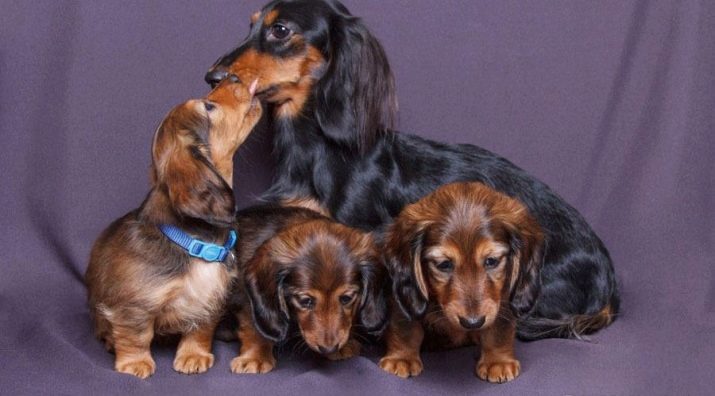
Reproduction of dogs is possible only during the period of estrus in females, while males are almost always ready for this process, with the exception of disease states. A dog's heat lasts about three weeks and almost all this time they pay increased attention to males.
The leak is accompanied by secretions, which may have a specific smell, so at home, in order to keep the room clean, you can put on special diapers on the dog. If you are not going to breed your dog, you should take care of its safety during this period and get special panties for walking, which will not prevent the animal from peeing, but will not allow the dog to mate.
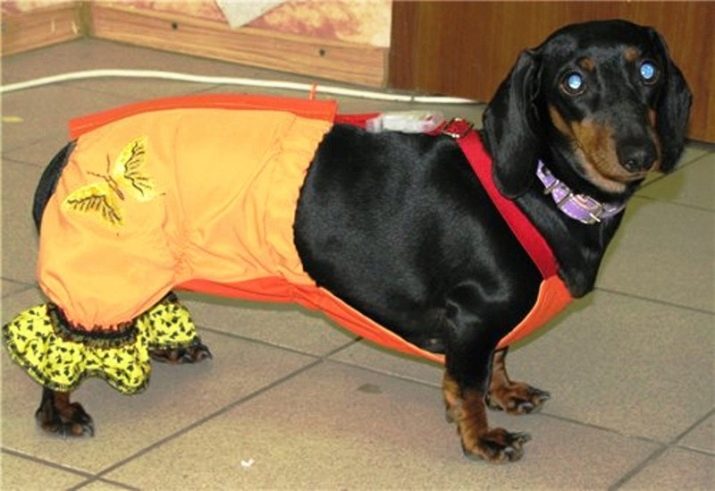
If you intend to purposefully breed dogs of this breed, then you should know that for a fruitful conception it is best to mate between 12 and 16 days of estrus. If everything goes well, the dog will stop reacting to the males and will not let them near him.
During pregnancy, it is important to provide the dog with everything it needs. The dachshund may have increased appetite and some anxiety due to changes in hormonal levels. In addition to increasing the portions, it is also worth adding to food special vitamins and minerals that support the physical condition of a puppy dog and help in the formation of healthy future puppies.
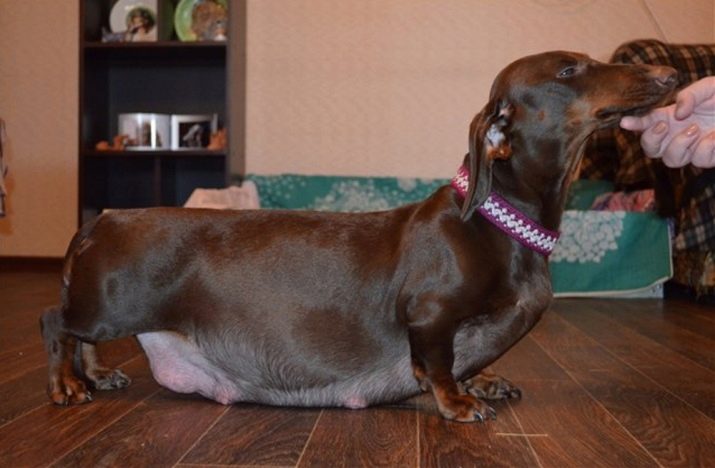
It is very important not to miss the prenatal period and the birth itself. Often there are cases when the owners miss the due date, and the dog, for some reason, cannot give birth by itself, and then the puppies die inside it. If the deadline has come, but nothing happens, you need to urgently seek medical help. If you had to give birth to a dog on your own, you need to do it very carefully.
Hunting dachshunds often do not need help, but this does not mean that there is no need to monitor childbirth, because a dangerous situation can arise.
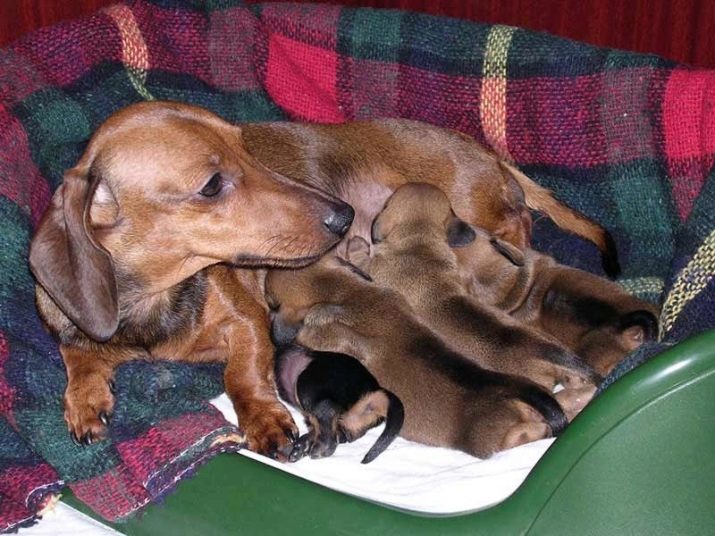
Puppies are born in biological membranes, from which the dachshund is able to free them itself. She independently gnaws the umbilical cord and frees the airways of babies from mucus. After completing these processes, she can begin the first feeding of the puppies, pushing them with her nose to the nipples. Newborn puppies do not need any special care, because the dachshund itself fully provides them with everything they need. In the postpartum period, you need to carefully monitor the nutrition and condition of the dog itself, as well as how she feeds her babies.
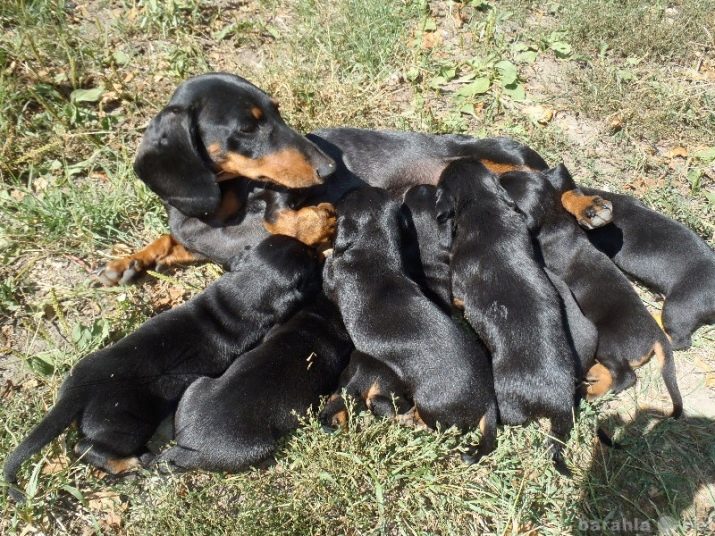
Puppies can be weighed to determine if they are developing well and if they have sufficient maternal nutrition. At about 3-4 weeks of age, the puppies will need to be treated for internal parasites.
In a month, you can begin to introduce complementary foods into the diet of puppies, and after a while, completely wean them from their mother and transfer them to self-feeding.

Popular nicknames
Having started a dachshund, everyone wants to give it an original and unusual nickname. You should not invent a complex and long name, as it will be difficult for the dog to remember it and get used to it, and it may happen that it will not react to it. Usually dogs are called nicknames, consisting of two, maximum three syllables. Some even call their pets human names. Basically, the nickname depends on the owner's imagination, but there are often cases when the nickname is selected for any features of the appearance or character of the pet.
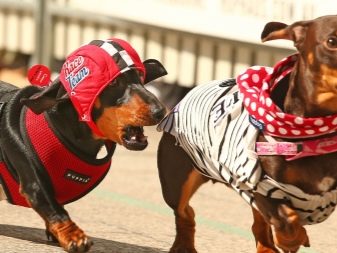
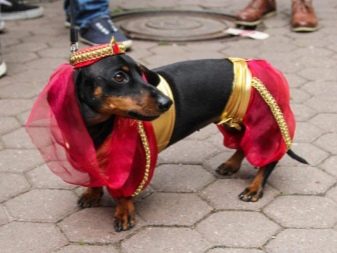
For example, a red-headed mischievous dog can be called Ginger, and a sullen kid who loves to bark will receive the nickname Grumbler. In addition, options such as Chernysh, Veselchak or Tikhonya, Kashtanka or Kashtan, Fuzzy or Fluff are common, and a wire-haired dachshund may even get the nickname Hedgehog. The spotted baby will be named simply - Spot.

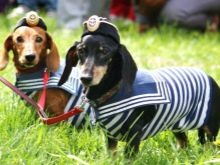

Among other nicknames that do not relate to the habits and appearance of the pet, for boys the most common names are Richie, Charlie, Rocky, Tosha, Mickey, Santa, Marks, Max. Unfortunately, nicknames such as Sharik and Druzhok are rarely used these days, but they certainly do. Among the nicknames for girls, such as Oliva, Bun, Bela, Lexi, Lassie, Julia, Jucy, Lisa and many others sound very original and perky.
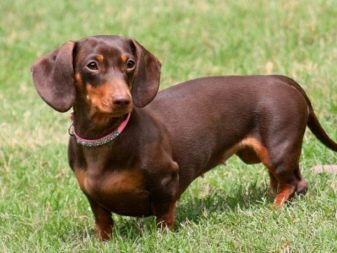

Owner reviews
It is very difficult to find negative reviews among the owners, since almost everyone is engaged in raising their pets. The owners note the sharp mind of the animal, and dexterity, and ingenuity. And many are even surprised at the dachshund's abilities and its constant desires for something to hunt, as well as the increased attention to detail and trifles.


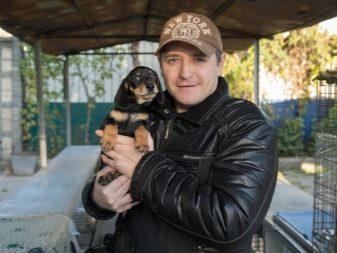

Negative reviews can be found only from people who did not have experience of close interaction with dogs of this breed and met with an animal that, perhaps, was in a state of stress, protected its owner or offspring.
Therefore, you should not form your opinion about the breed only on the basis of reviews. To understand and love a dachshund, you just need to get to know it better.
See below for more details.







































I have 2 red rabbit dachshunds, their names are Kysh and Waxon. The dwarf dachshund's name is Buddy, he is black with tan marks. One dwarf dachshund, whose name was Tanya, gave into good hands.